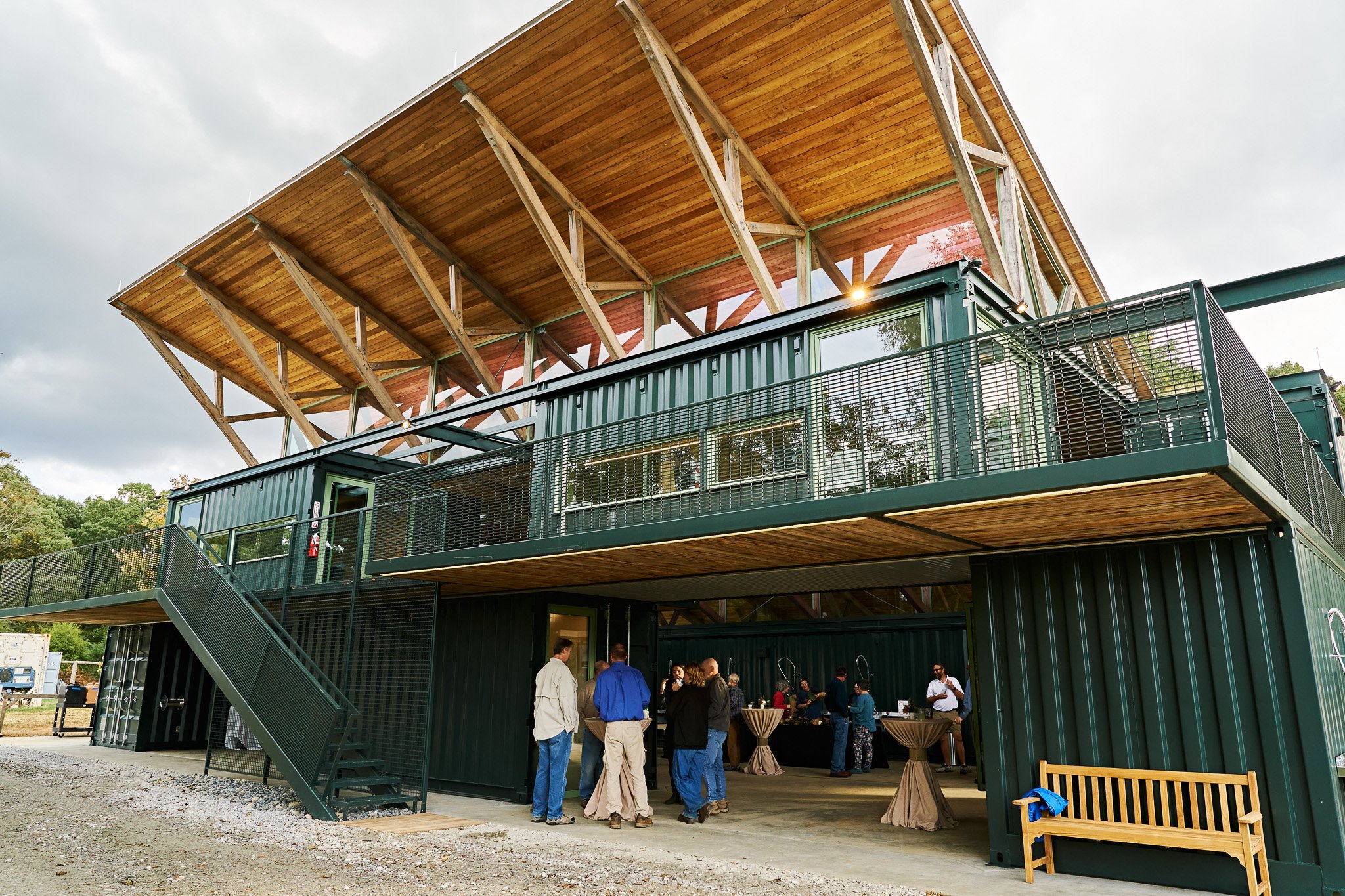Barn Series: Black Locust Wood
In the design phase of the container barn, our partners at REdesign.build pored over potential materials in effort to use the most sustainable options available. (Keep your eyes peeled for future stories about the innumerable unique materials that went into the container barn.)
When it came to selecting the materials for the trusses and framing for our solar panel-clad roof, we quickly honed in on black locust wood.
Not the most common or obvious choice, perhaps. But if you drive down any rural road around the farmlands of western NC, you’re guaranteed to see plenty of fence posts, sheep paddocks, and other outdoor fixtures built of this wood. It’s already a fixture in agricultural design. Here’s why:
This wood can rival hickory for hardness.
It is naturally rot and pest resistant - in fact, it’s one of the most rot-resistant trees we can grow in this climate.
It is native to the Appalachian mountains.
It is fast-growing (some go so far as to call it invasive)
It is a great contributor of nitrogen (sometimes even interplanted for this purpose with other crops like barley).
Its flowers make great food for pollinators, and it is sometimes planted to support honey production.
All these characteristics make black locust trees notable as a sustainable wood option. What could be better for our structure’s needs?
With our hearts set on black locust wood, we now faced the task of sourcing. For the shorter, tongue-in-groove pieces to make up the roof sheathing, Robi Decking out of Winston-Salem supplied our needs. But finding enough large,16-foot lengths to make the trusses (which would extend the full length of the building’s footprint) proved more challenging. We called in Billy Keck.
Billy, along with his wife Melody, runs Raleigh Reclaimed, a local business rooted in craft and sustainability. In addition to building stunning tables, shelves, bars, and other furnishing feats of carpentry, they focus a great deal of their energy on building a sustainable, reclaimed lumber supply for others. They reclaim wood from old structures, as well as wood that other sawyers and sawmills don’t want or can’t use (that would otherwise rot).
Billy put out the call to his network of sawyers, letting them know of our specific special request. It took months, but finally it came together, like the world’s largest wooden jigsaw puzzle. With the pieces we needed finally on site, it was time to build and install.
Video courtesy of RE.design.build
What must the birds have thought, as the already assembled trusses were craned up and over, gracefully careening to their places high above the farm’s grounds? WholeTrees, an outfit out of Madison, Wisconsin, worked on the design for these structural support, bringing their years of experience of building similar structures in institutions around the world - from zoos to outdoor classrooms.
Now these beams of locust wood provide the framing for our common area—the future home of events, farm-to-table dinners, workshops, and more; they support the array of solar panels that powers our work; and they provide shelter to the farming team that keeps Burkett Farm going.


